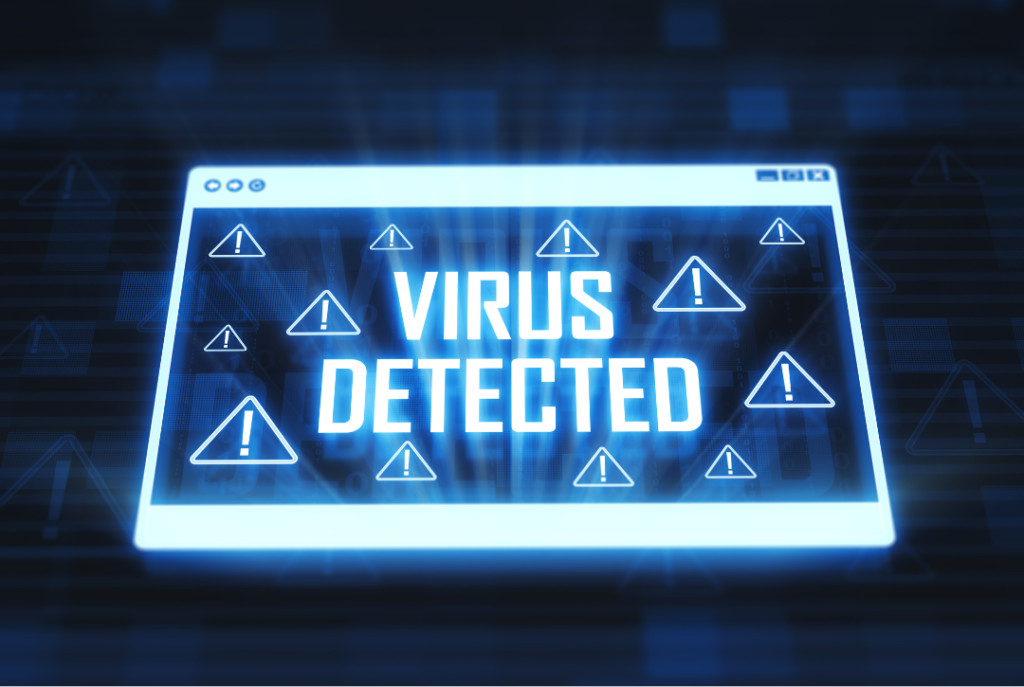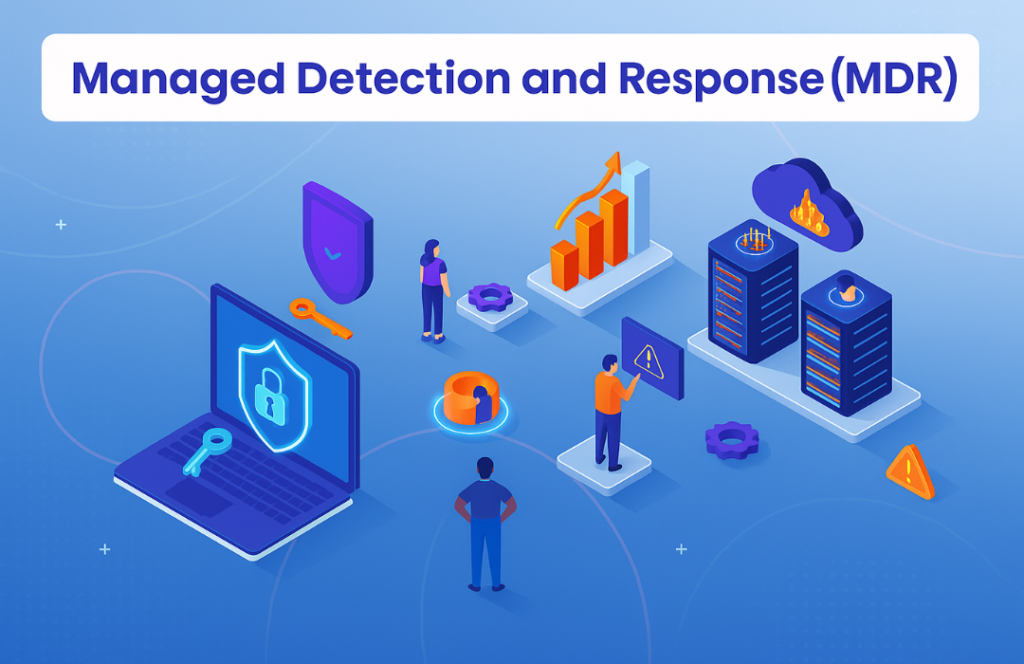
With the ever-evolving world of cybersecurity, small and medium-sized enterprises (SMEs) are increasingly standing at a crossroads. Antivirus software and firewalls are no longer sufficient to protect against the constantly evolving and relentless cyberattacks of the present day. To fortify their defenses, a significant number of SMEs now turn to Managed Detection and Response (MDR) solutions.
MDR offers an engaged and comprehensive cybersecurity plan that extends past the fixed shield of firewalls. While traditional security procedures have their guard down, MDR is continuously monitoring an organization’s environment, discovering new threats, and providing real-time responses to mitigate threats in real-time. This shift to MDR is redefining how organizations approach cybersecurity, and here’s why SMEs are leading this revolution.
The Limitations of Traditional Firewalls


Firewalls have long been the foundation of network security. Firewalls are a barrier, preventing incoming and outgoing traffic, based on particular security policies. While they are still essential, traditional firewalls are not enough when it comes to handling today’s cyberattacks. Here’s why firewalls alone may not be enough:
Limited Threat Detection: Firewalls protect against known threats using signature-based detection methods only. They may not detect more complex or unknown threats, such as zero-day attacks or advanced persistent threats (APTs).
Reactive, Not Proactive: Traditional firewalls are designed to block suspicious traffic but lack proactive, real-time threat detection and response capabilities. When an attack is initiated, firewalls will not necessarily be able to detect or block it.
Insufficient Monitoring: Firewalls tend to be focused on dealing with access points but fail to monitor an enterprise’s network in a continuous mode for suspicious behaviour, leaving openings in security.
To articulate the shortcomings of conventional firewalls in detail, this IBM whitepaper on data leakage discusses the failure of ordinary security controls to function.
The Rise of MDR: Next-Gen Threat Detection and Response


MDR is quickly becoming popular among SMEs as a reliable alternative to traditional firewall-based security tools. So, what exactly is MDR doing that firewalls are not?
1. Real-time Monitoring On All Systems
MDR solutions provide 24/7 visibility into your cloud infrastructure, endpoints, and network. They’re designed to identify anomalies, suspicious behavior, and indicators of compromise (IoCs) in real-time. Unlike firewalls, which react to known threats only, MDR actively looks for new attacks, —be it a previously known vulnerability or an entirely new attack vector.
For more information on monitoring as an ongoing process, see this CISA guide to cybersecurity best practices.
2. Active Threat Hunting
MDR offerings don’t sit idly by waiting for alerts to come in—instead, they actively search out potential threats before they become full-scale attacks. Cybersecurity professionals constantly scan your environment with advanced analytics and threat intelligence to detect emerging weaknesses and prospective attack paths.
This preventive action plays a crucial role in identifying threats early on, in a manner that can keep attacks from happening and growing. For more about threat hunting and how it is used toward cybersecurity, this article by SANS Institute provides a better deeper perspective on how crucial it is.
3. Rapid Incident Response
When a threat is detected, MDR services are designed to respond instantly. Rather than simply alerting the IT staff, MDR providers dispatch security experts who take instant action to contain and neutralize the threat. Such instant response can prevent catastrophic damage, minimizing downtime and impact on business operations.
For SMEs, such rapid response is invaluable. What it entails is that should a threat happen to breach the perimeter, there will be an opportunity to quickly respond to it, reducing the possibility of losing data or financial loss. A fine example of applied incident response practice is evidenced by the process Microsoft describes in their incident response.
4. Access to Expertise and Advanced Technology
One of the key advantages of MDR for SMEs is access to advanced tools and specialized cybersecurity experts. Small businesses cannot afford to hire an in-house security operations center (SOC) or full-time experts. MDR bridges this gap by offering round-the-clock expertise without paying for an in-house team.
With sophisticated machine learning and AI-based threat detection, MDR offerings can identify intricate attack patterns that would be challenging for conventional techniques to detect. For those looking to learn more about the tools behind these solutions, Microsoft’s AI and security insights are a good place to start.
5. Global Threat Intelligence
MDR providers can draw upon a broad ecosystem of global threat intelligence. This allows them to stay ahead of emerging threats using real-time intelligence and information from various sources. Since MDR services have constant monitoring of new attack trends, they are able to provide early warnings of potential vulnerabilities so that companies can update systems before they are exploited.
For an overview of the benefits of global threat intelligence, this World Economic Forum article describes how industry-to-industry information sharing is enhancing threat detection and response.
Why SMEs Are Turning to MDR Solutions
While large enterprises have the budget and expertise to build robust in-house security teams, SMEs don’t have the budget or experience to manage cybersecurity on their own. Here’s why the majority of SMEs are adopting MDR solutions:
1. Cost-Effectiveness
MDR offers SMEs an affordable way of accessing enterprise-level security. Rather than invest in expensive hardware or hire a permanent security team, organizations can subscribe to an MDR solution that provides protection 24/7 at a fraction of the cost.
2. Comprehensive Coverage
MDR provides comprehensive protection in all areas of an organization’s IT infrastructure—whether on-premises, cloud, or hybrid environments. Robust protection is critical with SMEs increasingly relying on cloud-based products and remote working environments.
3. Scalable Security
As SMEs grow, their security needs follow. MDR solutions are both scalable and versatile, i.e., they may be adjusted in order to match changing business conditions without requiring one to totally revamp existing architectures. To read more about adaptive IT solutions, see this Gartner guide, which contains invaluable information on designing flexible cybersecurity plans.
4. Faster Response Times
Through 24/7 coverage and rapid response, MDR reduces the time required to detect, isolate, and remove threats. This rapid response is especially vital for SMEs, where breach cost and reputation loss can be considerable.
Conclusion: The Future of Cybersecurity for SMEs

As cyber threats become more sophisticated, SMEs can no longer rely on the traditional firewall to protect their network. MDR offers a cost-effective, dynamic, and proactive solution by overcoming the limitations of traditional security solutions.
By providing around-the-clock monitoring, real-time threat detection, response teams of experts, and strong threat intelligence, MDR can ensure SMEs are equipped to deal with the evolving face of cybersecurity firsthand. With MDR, SMEs can feel secure protecting their valuable data and stay ahead of looming cyber threats, allowing them to focus on what they do best—business growth.

